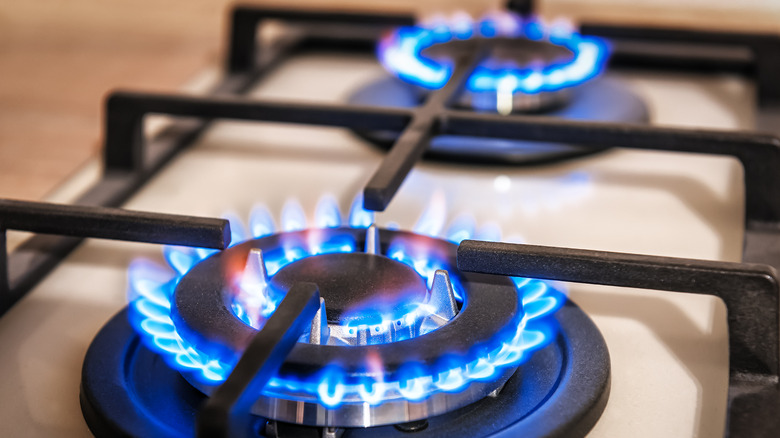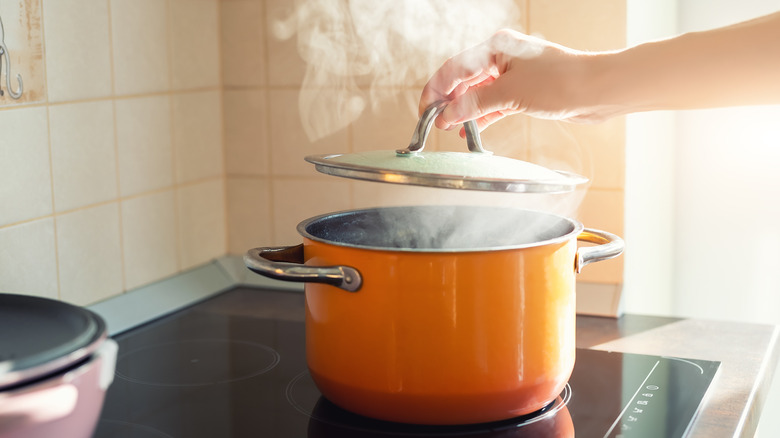Your Gas Stove Is Probably Leaking Methane. Here's Why
Methane is one of the most powerful greenhouse gasses driving climate change. Although methane doesn't last in the atmosphere as long as carbon dioxide, per the EPA, it's 25 times more powerful in its contribution to global warming over a 100-year time span.
Decomposing food waste releases methane, as do cattle, landfills, and oil rigs, and the "gas" in natural gas is almost all methane (per Vox). For years, researchers have been working to account for methane emissions, especially in cities, but kept finding unexplained gaps. However, a January 2022 study in the journal Environmental Science & Technology nails down the culprit. Gas stoves.
The researchers estimated that the methane leaked by gas stoves every year is about equal to the carbon emissions produced by 500,000 cars (per Bloomberg). And what's even more concerning, methane isn't only spilling into your home while cooking, but also when your stove is turned off.
The fossil fuel industry still pumps far more methane into the air than the average family does and even at the household level, gas furnaces and water heaters use more fuel than stoves do. But because gas burners are closer to where we eat and sleep, the effects can still be harmful.
How to minimize methane emissions
If you're part of the roughly one in three American households, about 40 million homes, who cook with gas, you might have reason to be concerned about methane emissions. You may notice the familiar smell when the stove sparks on and might think that's the end of it, but nearly ¾ of total methane leaks are "steady-state emissions" when stoves aren't even in use (per Vox). Methane is not the only concern. According to a 2013 study in the International Journal of Epidemiology, gas stoves also leak CO2 and nitrogen oxides, which aren't harmful to the climate but have been linked to heart and respiratory issues and can worsen asthma in children.
So what can you do about it? The biggest change you can make is switching from a gas stove to other types, like electric or induction. The latter uses magnets to quickly heat your pots and pans and is deemed safer than both gas and electric (via The Wall Street Journal). Besides being the easiest type of stove to clean, the induction stove cooktops also produce fewer emissions and are more efficient. Pushing for policies that limit the installation of new gas stoves, as New York City enacted in December 2021, can also help support public safety and contribute to the slowing of climate change.

